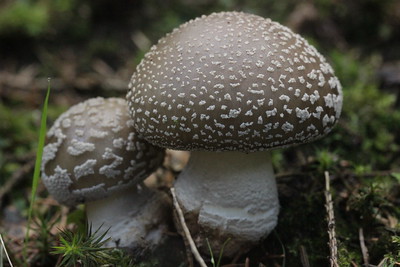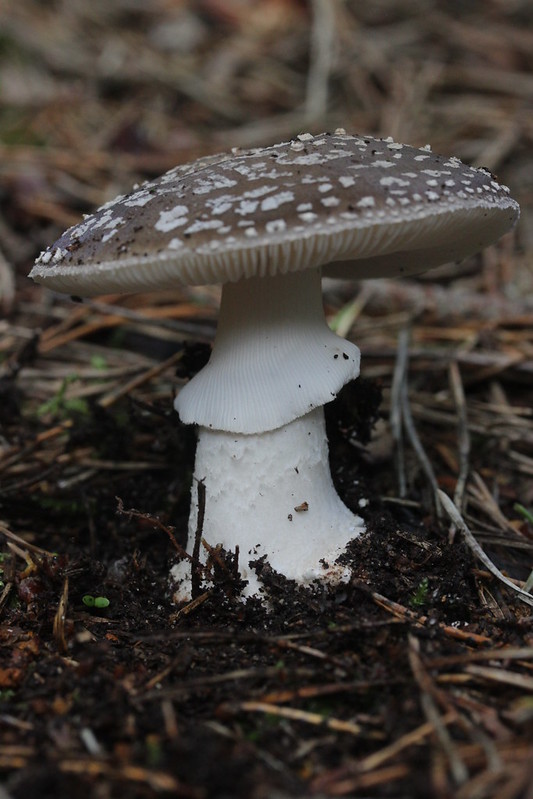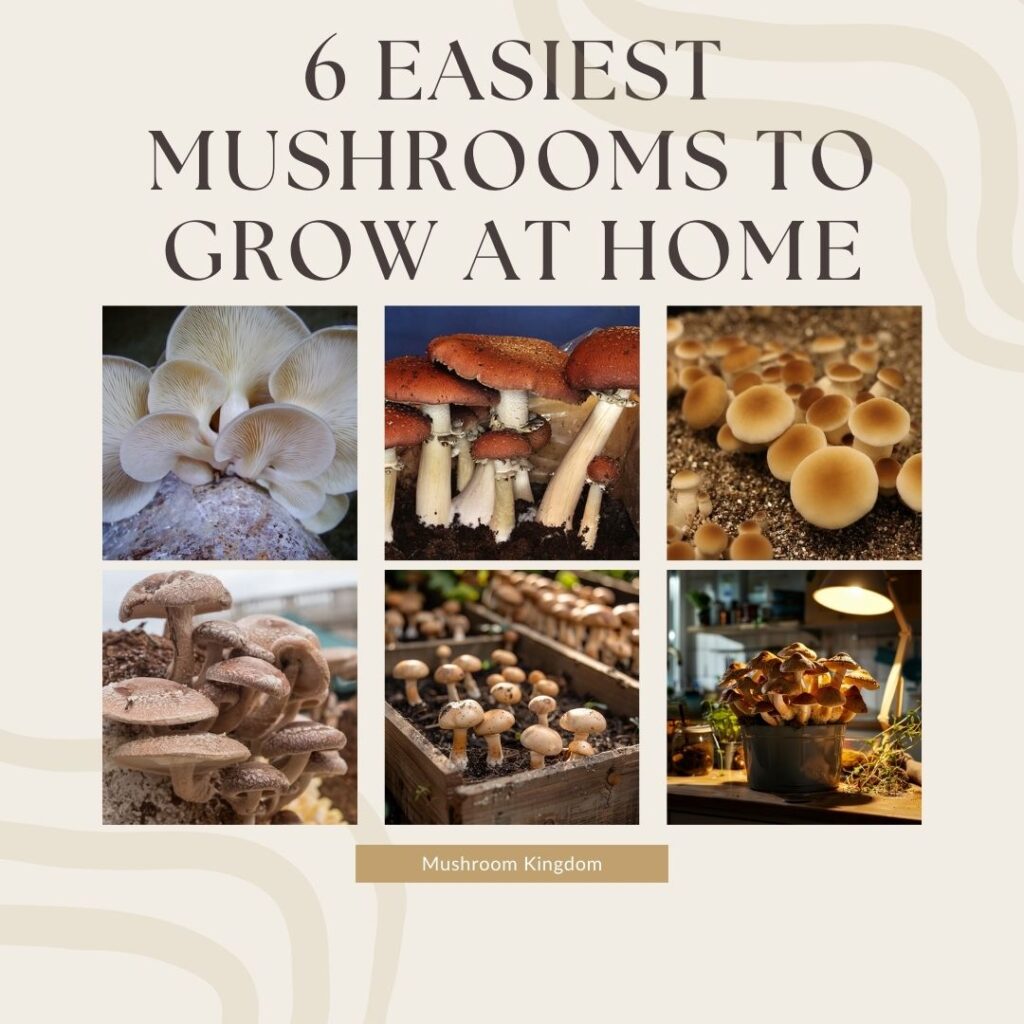Amanita excelsa var. spissa, commonly known as the grey spotted amanita or false panther cap, is a type of mushroom belonging to the Amanita genus.
Here are some key facts about this variety.
How To Recognize Grey-Spotted Amanita?
Recognizing Amanita excelsa var. spissa (grey spotted amanita) in the wild involves paying attention to several distinctive features. Here are the key characteristics to look for:

Identification:
- Cap: The cap of Amanita excelsa var. spissa is typically grey or grey-brown and covered with small, white, wart-like patches. It can grow up to 10–15 cm in diameter. The cap is convex when young and flattens out as it matures, often with a slightly depressed centre.
- Gills: The gills are white, free from the stipe (stem), and closely spaced. They do not change colour when bruised.
- Stipe: The stem is white or greyish, cylindrical, and may have a bulbous base. It often features a ring (annulus) near the top and sometimes a volva at the base.
- Spore Print: The spore print is white.
- Flesh: The flesh is white and does not change colour when cut.
- Fruit Body Emergence: Typically appears from summer to autumn (June to October in the Northern Hemisphere).
Location
They are widespread across various countries in Europe, from northern to southern regions. You can also find them in North America, particularly in temperate forested areas.
In the forests, they can be often found under broadleaf trees such as birch (Betula spp.), beech (Fagus spp.), and oak (Quercus spp.). Also, you can spot them in mixed forests with coniferous trees like pines (Pinus spp.) and spruces (Picea spp.).
Caution
This mushroom resembles other toxic Amanita species like Amanita pantherina (the panther cap). Ensure accurate identification by comparing all features.
Due to the risk of misidentification, it is advisable not to consume this mushroom unless you are absolutely certain of its identity and it has been confirmed by an expert.
Is Grey Spotted Amanita Edible Mushroom?
There is some disagreement among mycologists regarding the edibility of Amanita excelsa var. spissa. While some sources claim it is edible, others suggest it should be avoided due to potential adverse effects. Thus, it is generally not recommended for consumption.
Grey Spotted Amanitas can be mistaken for toxic species such as the Destroying Angel (Amanita virosa) or the Death Cap (Amanita phalloides), both of which contain deadly toxins. Consuming even a small amount of these toxic species can lead to severe illness, organ failure, and, in extreme cases, death.

Caution: Similarity to Toxic Species
Amanita excelsa var. spissa (Grey spotted Amanita) closely resembles Amanita pantherina (Panther Cap). Consuming Amanita pantherina can cause severe poisoning symptoms, including hallucinations, delirium, and in extreme cases, death.
Next, amanita species such as Amanita phalloides (Death Cap) and Amanita virosa (Destroying Angel) are deadly poisonous and share some visual similarities with Amanita excelsa var. spissa, especially to the untrained eye.
Given the high risk of misidentification and the potential for serious toxicity, it is strongly advised not to consume Amanita excelsa var. spissa unless you are an expert in mushroom identification and absolutely certain of its identity.
Grey Spotted Amanita vs Panther Cap — What’s The Difference
Identifying Grey Spotted Amanita (Amanita excelsa var. spissa) versus Panther Cap (Amanita pantherina) can be challenging due to their similarities. However, there are several distinguishing features to help tell them apart:
Cap
The Grey Spotted Amanita has a grey to grey-brown cap covered with small, white, wart-like patches. These patches are remnants of the universal veil. The cap is convex when young and flattens out with age, often having a slightly depressed center. It typically grows to about 10–15 cm in diameter.
In contrast, the Panther Cap’s cap is darker, ranging from dark brown to yellowish-brown, and is also covered with small, white warts, but these are more regularly spaced and prominent. The cap of the Panther Cap is convex to flat and sometimes slightly upturned at the edges, growing to a similar size of 5–15 cm in diameter.
Stipe (Stem)
The Grey Spotted Amanita has a white to greyish cylindrical stem with a bulbous base. It often has a ring near the top of the stem, but this ring can be fragile and may disappear in older specimens. The volva at the base of the stem is present but sometimes less pronounced.
On the other hand, the Panther Cap’s stem is white and cylindrical with a more distinct bulbous base. The ring on the Panther Cap is more persistent and prominent, and the volva is more pronounced, often appearing sack-like and white.
Toxicity
The Grey Spotted Amanita is not classified as highly toxic but can cause gastrointestinal distress. Its edibility is debated, and it is generally considered risky to consume due to the potential for misidentification with more toxic species.
The Panther Cap, however, is known to be toxic and can cause severe symptoms, including hallucinations, delirium, and, in severe cases, coma and death.


